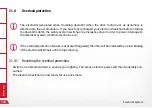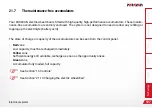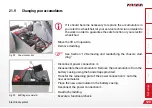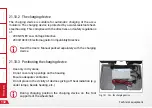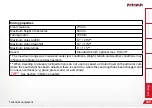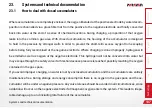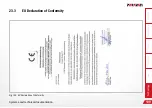
Gener
al
Information
Pr
epar
e
Oper
ate
Help
Technology
Systems and technical documentation
137
23.
Systems and technical documentation
23.1
How to deal with closed accumulators
Where accumulators are completely enclosed, the oxygen liberated at the positive electrode by water decom-
position is channelled via a glass fibre mat from the positive to the negative electrode and finally converted
back into water at the end of a series of chemical reactions. During charging, a proportion of that oxygen
leaks into the common gas area. With closed accumulators, the housing of the accumulator is designed
to hold in the pressure by stronger walls in order to prevent the short-term excess oxygen from escaping
before being fully recombined at the negative electrode. Where charging is done improperly, hydrogen will
be emitted as well as oxygen at the negative electrode. This hydrogen will not be converted into water but
may escape through the safety valve if a threshold excess pressure is reached, possibly reaching the oxygen
contained in the gas space.
If you avoid improper charging, no water is lost by enclosed accumulators and the accumulators are entirely
maintenance-free. During storage and energy consumption there is no oxygen in the gas space and the ac-
cumulator will be under a negative pressure. Any valve release should be avoided in all circumstances, since
oxidation will occur on the negative electrode if atmospheric oxygen enters the system. This leads to irrepa-
rable damage, up to and including total failure of the accumulator.


